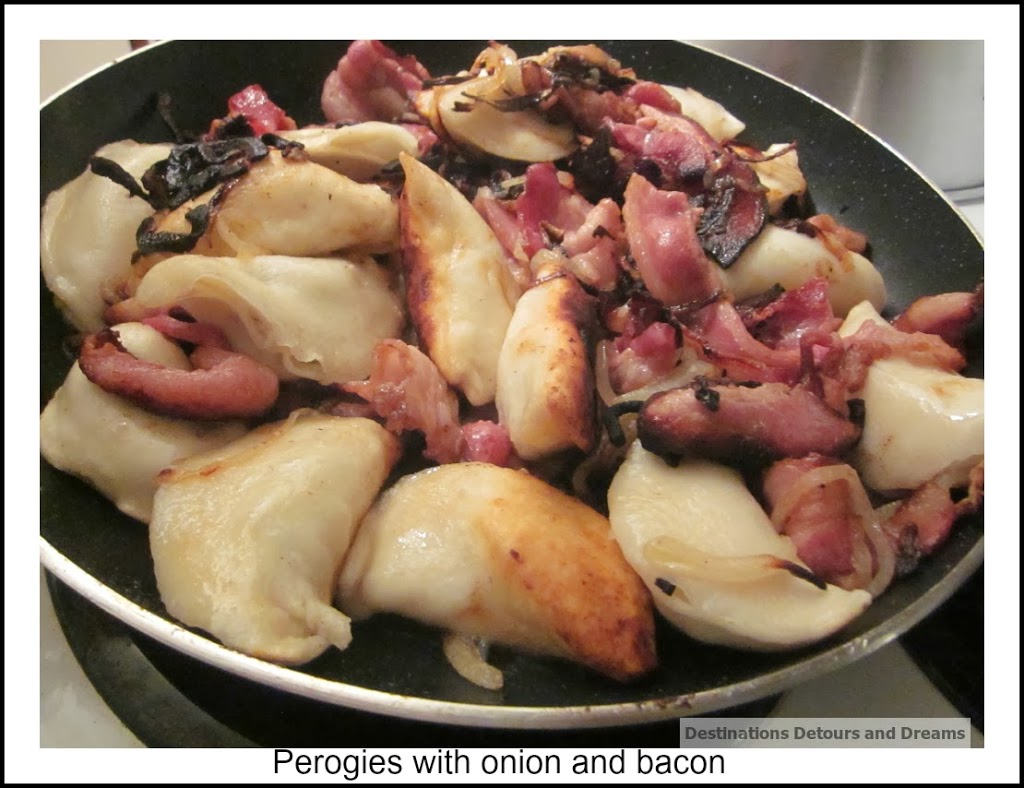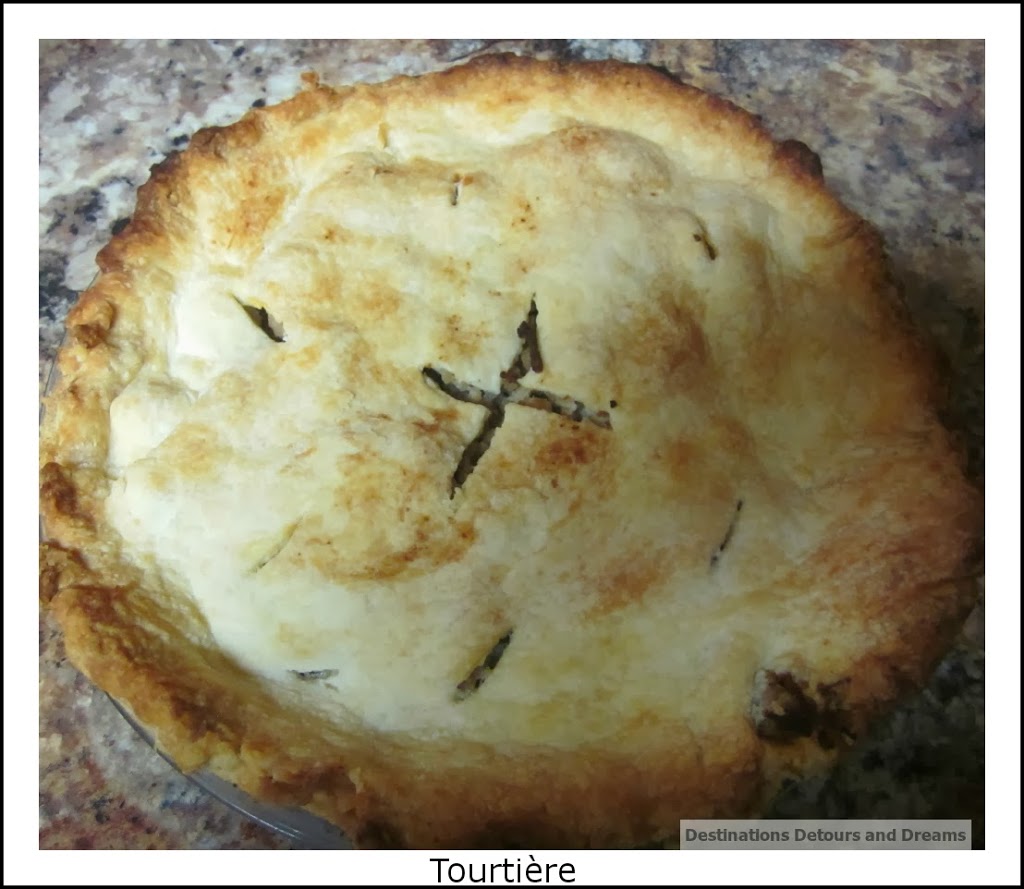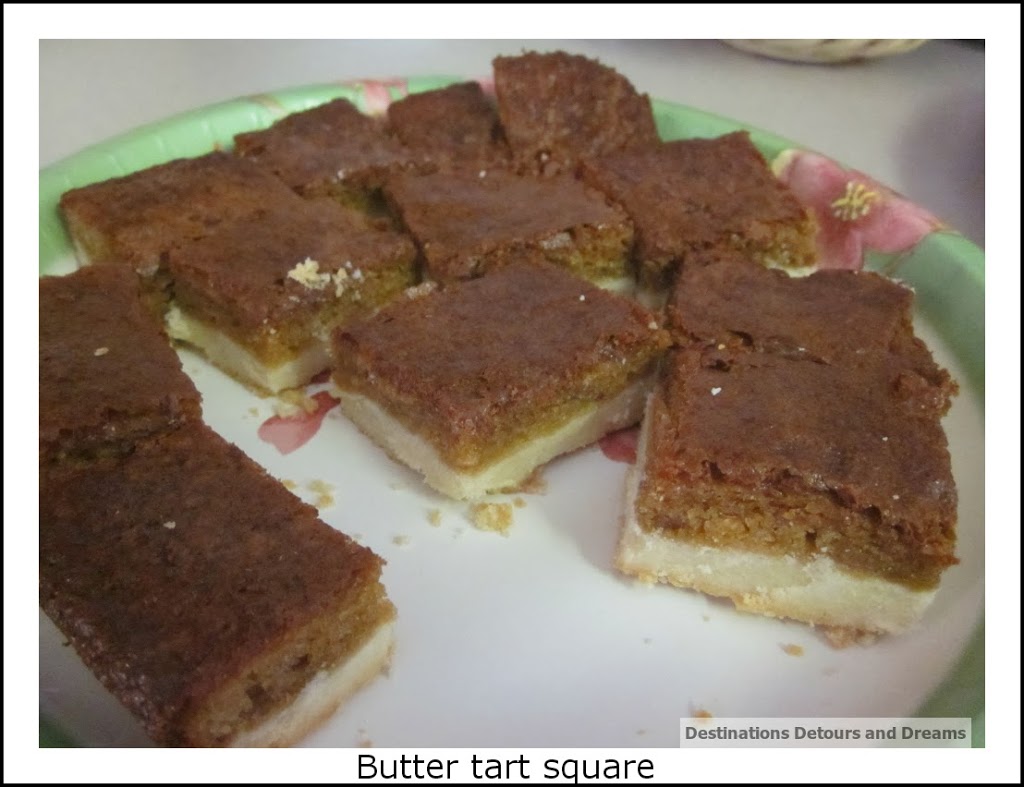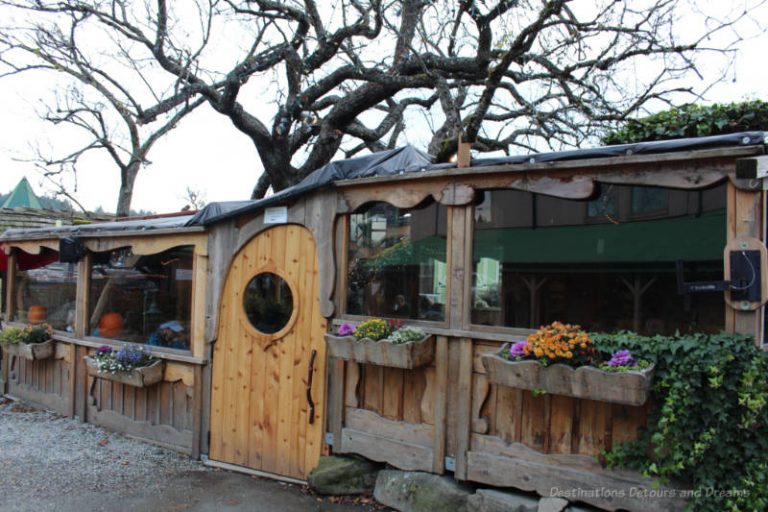Manitoba Foods
Home sick for Manitoba food
Sampling the cuisine of a country or region is one of the delights of travelling. Although most Canadians can identify a few regional specialities, we generally don’t think there is anything particularly unique about the food we eat. After spending two winters away from my home in Manitoba, I am more aware that there is, indeed, something that can be called Manitoba cuisine.
The first thing to mention is farmer’s sausage, a type of seasoned pork sausage. Some varieties are smoked, some are not. It is served roasted, grilled, or broiled. There are a few larger companies that supply grocery stores across the Canadian prairies. Many local butchers make their own versions. Locals develop strong attachments to a particular brand. I’ve not found anything close in Arizona. One of my first meals when I get back home to Manitoba in spring will be farmer’s sausage.
Manitoba is home to many lakes, including Lake Winnipeg, the sixth-largest freshwater lake in Canada. Pickerel, a white and flaky fish known as walleye in other parts of the continent, is found in Lake Winnipeg and other Manitoba lakes. Although all of the fish is delicious, the cheeks are considered a special delicacy. The sweet, boneless coins of meat are usually served pan-fried. Goldeye is a small fish, averaging less than one pound, that is served smoked. Its taste is somewhat similar to smoked salmon.
Lean bison meat has become popular in recent years. Local berries are eaten fresh in season and frozen or turned into jams and jellies for the rest of the year. Varieties include raspberries, strawberries, blueberries, saskatoon berries, and chokecherries. Wild rice, a grain of wild grass plants, has been harvested by North American natives for centuries.
Immigration played a major role in Manitoba’s history and has impacted the foods we eat. Thanks to Polish and Eastern European influences, cabbage rolls and perogies (also spelled pierogi, pierogy, pyrohy, or pyrogy), dumplings traditionally stuffed with potato and/or cheese, boiled and then fried, grace many family holiday dinner tables, alongside the turkey or ham.
Beet borscht is also a legacy of Eastern European immigration. A variety of other borschts, aka soups, have made their way onto the menu via the large Mennonite population. A personal favourite is summer borscht, a ham bone based broth containing potatoes and beet leaves or sorrel. Pluma moos, a purplish cold desert soup made from plums or dried fruit, is a Mennonite dish loved by many, but one that has never held much appeal for me.
Manitoba has the largest ethnic Icelandic population outside of Iceland. The dish most Manitobans associate with our Icelandic heritage is vinarterte, a torte with six to seven layers of a cookie-like dough separated by a prune filling spiced with cardamon. Popular at Christmas, it is considered traditional Icelandic food in Manitoba. However, I recently learned you are unlikely to find vinarterte in Iceland. Vinarterte was popular in Iceland at the time Icelandic immigration to Manitoba occurred in the 1870s. The fad passed in Iceland, but was kept alive in Manitoba.
Manitoba has a large Francophone population, bringing a French-Canadian influence to the menu. Tourtière, a meat pie originating from Quebec, is now popular across Canada. Ground pork, or combinations of ground pork, ground veal, and ground beef are seasoned with savory, nutmeg, clove, and/or cinnamon. Many recipes exist with variations on the mixture of meat and combinations of spices, family recipes passed down through generations. Another French-Canadian dish found in Manitoba, and other places across Canada, is poutine. Poutine is a dish made with French fries topped with gravy and cheese curds. It may sound odd to someone who’s never tasted it, but it is delicious. True comfort food.
Then there is Winnipeg-style rye bread, a soft bread made with cracked rye or coarse rye meal added to wheat flour. Caraway seed is not added. Kub Bread and City Bread are two popular sources for Winnipeg-style rye bread. As with farmer’s sausage, locals develop a strong attachment to one brand.
A tray of dainties serves as dessert on many Manitoba occasions. Dainties, a term that may be unique to the Canadian prairies, refers to an assortment of squares and cookies. Popular items on the dainty tray include:
- matrimonial cake, a date square with an oatmeal crumb topping
- Nanaimo bars, a dessert bar with a wafer crumb-based bottom, a custard middle layer, and a melted chocolate top layer
- butter tarts, a pastry tart shell filled with a mixture of butter, eggs, brown sugar and flour, optionally containing raisins
- butter tart squares, a variation on butter tarts
What food(s) do you associate with Manitoba?











I think you compiled a pretty good summary of Manitoba foods, and we sure do miss many of them … like good Winnipeg Rye Bread!!! We always bring some with us, but you can’t bring a whole winter’s supply. Occasionally some Manitoban either arrives late or has reason to go home mid season and brings several loaves of rye bread. Usually shared with friends, the excitement a few slices stirs you would think it is gold!
I am not a big bread eater, but after over four months away, I miss Winnipeg rye bread.
I too love eating regional food when we travel. Manitoba’s seems to be very eclectic.
Manitoba’s food is eclectic – the result of the influence of the different ethnic groups that settled there.
Great post, Donna. We do have an interesting blend of ethnic foods that have become popular in Manitoba, don’t we? I much prefer Ukrainian ham garlic sausage to farmer’s sausage, and venture to say it is equally as popular — if not MORE popular than farmer’s sausage. Other than that, I think you’ve got it pretty well covered.
Doreen: I actually thought about garlic sausage at one point when I wrote this post. But having been away from Winnipeg for four months, I was thinking more about farmer’s sausage. I’ve had sausage similar to the garlic sausage at home (although not as good), but nothing even close to farmer’s sausage. I remember once taking garlic sausage on the plane to Montreal for a friend who had moved there. A definite odor was developing around me in my stopover in Toronto!
As in Manitoba, I think the best of American cuisine is, for the most part, a conglomeration of the foods brought by the different immigrant groups to the United States, Unfortunately, what people think of when they think of “American” cuisine, is the preservative, empty calorie laden offerings of the now international brands such as MacDonalds and Burger King.
Definitely love to sample the local cuisine wherever I travel…these Manitoba dishes look delicious. I’m a big fan of bison meat and wild rice. I grew up in Kansas City, Missouri, which is renowned for its barbecue. And steak.
Perogies, sausage, butter tarts and more… there’s so much to love about Manitoba!
These all look delicious! I’ve never been to Manitoba so this was so interesting to read. That was great to know about the Icelandic population and I was desperately trying to remember vinarterte when we were in Iceland. It’s too bad they didn’t keep it. I love the blend of cultural foods here.
Would love to sample a few of these!
I don’t think we eat pickerel or gold eye in Nova Scotia. We have a notable French population. Last summer I visited Grand Pre during Acadian Days and enjoyed delicious tourtiere. I’ve never seen bison on offer in Nova Scotia, either. However, you might find moose, deer, and rabbit on offer 🙂